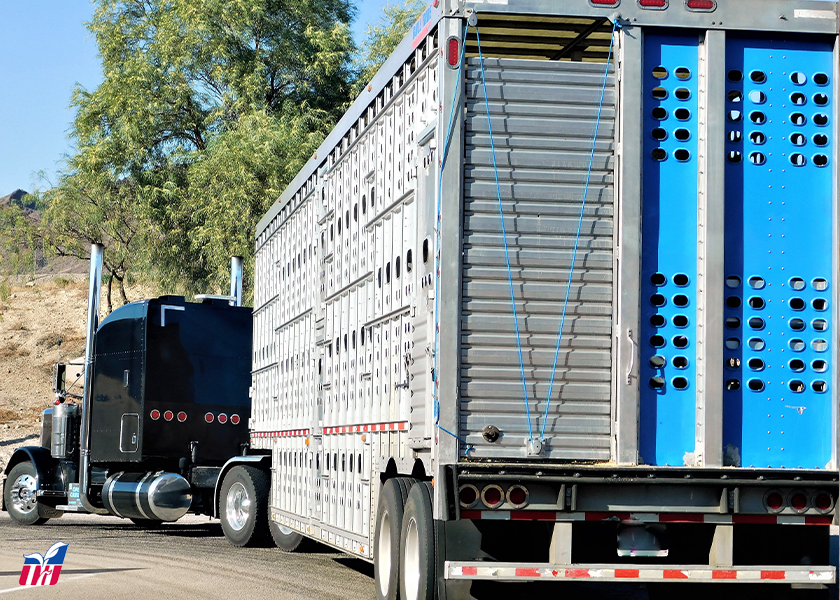Livestock Analysis | November 14, 2023

Price action: The nearby contracts led hog futures lower, with December futures losing $1.05 to $72.30 at the close.
Fundamental analysis: Traders seem uncertain as to how well the hog market will perform over the next month, with today’s drop by the December contract suggesting a modest drop before its Dec. 14 expiration. That weakness likely reflects the cash losses of the past two days, as well as anticipation of traditional seasonal declines. As expected, the index for last Friday dipped 23 cents to $76.05, but the preliminary calculation for Monday indicates an 8-cent bounce to $76.13.
The wholesale market also seems modestly supportive, with pork cutout still fluctuating between $86.00 and $90.00. It ended Monday at $86.77, having given back last Friday’s big gain. But it bounced $1.00 at noon today, with losses in loins and ribs diminishing the impact of significant gains by the other cuts. Given the fact that recent hog slaughter has consistently topped year-ago levels by an average of over 2%, this implies robust demand from grocers and consumers. We still believe that demand strength, as well as big annual reductions in ham and whole turkey stocks, will provide consistent support for the hog and pork complex well into the holiday season. Despite USDA indications from the September Hogs & Pigs reports, we can’t say we expect hog supplies to fall back to year-ago levels in the coming weeks.
Technical analysis: In spite of today’s drop, bulls still own the short-term technical advantage in December hog futures. Today’s low at $72.05 essentially reinforces initial support at the 10-day moving average near $72.10. Likely stout support at the 40-day moving average near $70.95 will probably see additional backing from the 20-day moving average near $70.26 and the psychological $70.00 level. Today’s high marked initial resistance at $73.00. Look for stiffer resistance at yesterday’s high of $73.80, then the Nov. 7 high of $74.275. A breakout above that point would have bulls targeting the $75.00 level.
What to do: Get current with feed advice. Carry all production risk in the cash market for now.
Hedgers: Carry all risk in the cash market for now.
Feed needs: You have all corn-for-feed and soymeal needs covered in the cash market through November.
Price action: December live cattle futures rallied 92.5 cents to $175.85, while deferred contracts saw additional gains. January feeder cattle futures rallied 70 cents to $229.00, despite expiring November futures falling 67.5 cents to $230.05.
Fundamental analysis: Live cattle futures continued recent corrective buying, boosted by an overwhelming “risk on” day in the broader marketplace. The Bureau of Labor Statistics released the October CPI report this morning, which showed inflation easing more than expectations. This sent risk assets sharply higher and interest rates lower, setting the stage for continued buying in live cattle futures. Cash fundamentals continued to wane today, as wholesale beef prices fell to new for-the-move lows. Choice cutout dropped $1.86 at midsession to $295.99 while Select slipped $1.50 to $267.74. Movement totaled a firm 88 loads. Cash trade has yet to develop this week; significant cash trade may be delayed until after Friday’s USDA Cattle on Feed Report due out after the close. Earlier trade seems likely to have a weaker tone. Following light cash cattle trade last week, feedlots likely have additional head to move, which will likely keep a lid on prices as trade develops.
Technical analysis: December live cattle futures struggled to maintain most of this morning’s gains as cash fundamentals offered little support. Bears retain full control of the technical advantage as a nearly two-month downtrend persists on the daily bar chart. Prices closed well off session highs after tagging coinciding 10-day and 200-day moving average resistance around $178.00. Resistance at $176.625 stands on the way. Bulls are seeking to hold prices above psychological support at $175.00, which is backed by $173.75, then last week’s low of $173.15.
January feeder cattle futures saw corrective buying for the third straight session as prices consolidate from the leg down seen in early November. Bears retain full control of the technical advantage, seeking to close prices below initial support at $225.00, then last week’s low of $223.625. Bulls struggled to garner momentum above initial resistance at the 10-day moving average, currently at $231.675, today. Further buying would have bulls targeting resistance at $235.00.
What to do: Get current with feed advice. All production risk in the cash market for now but be prepared for some hedge coverage as we have demand concerns.
Hedgers: Carry all risk in the cash market for now.
Feed needs: You have all corn-for-feed and soymeal needs covered in the cash market through November.






